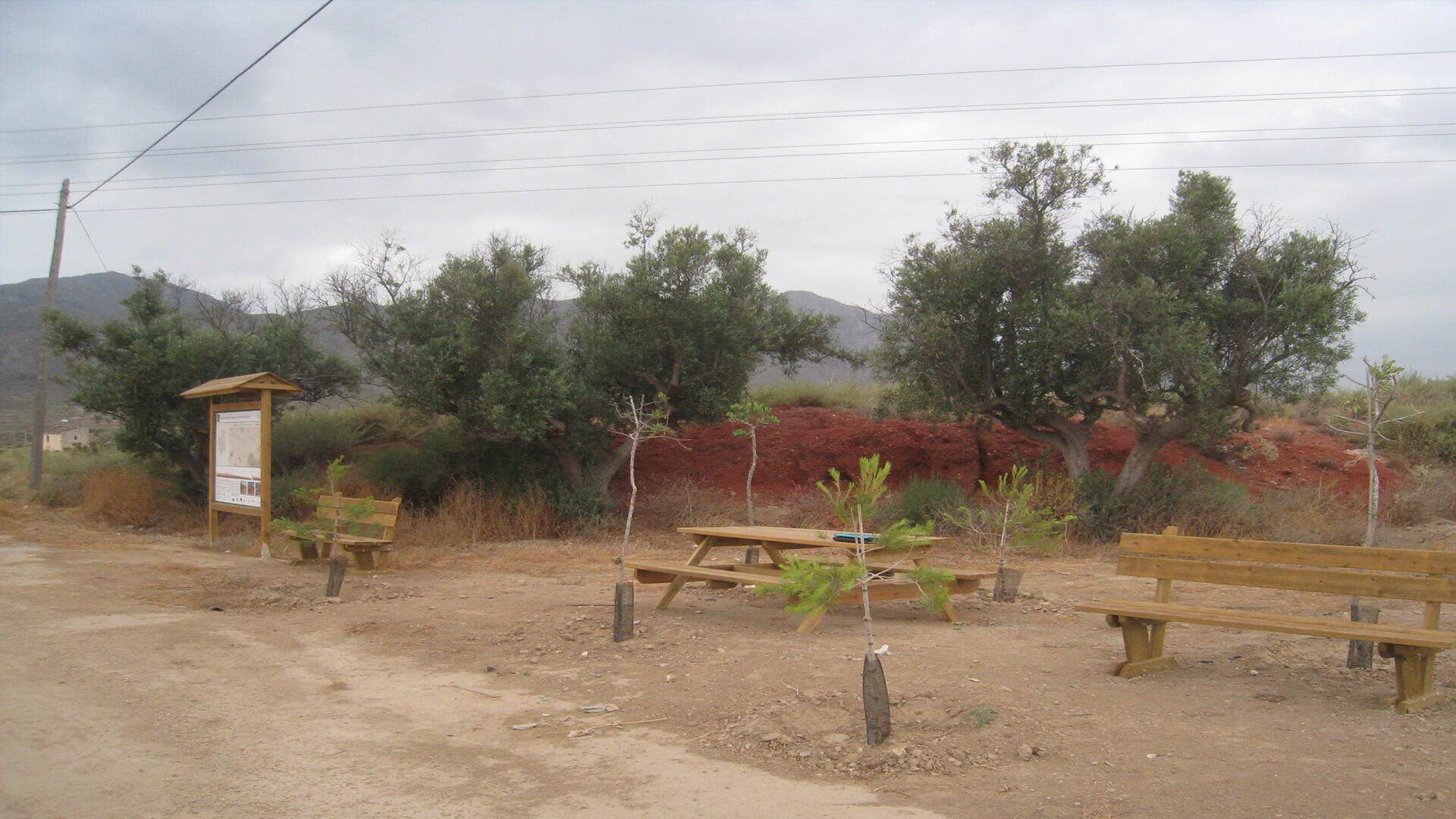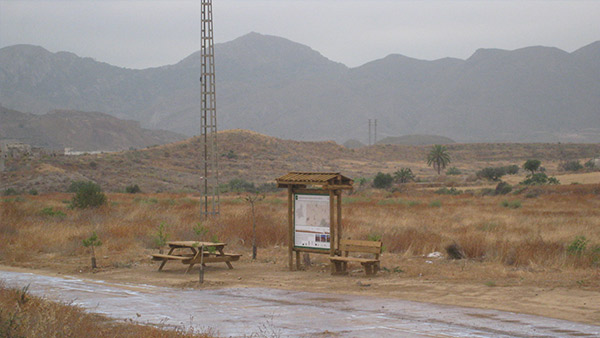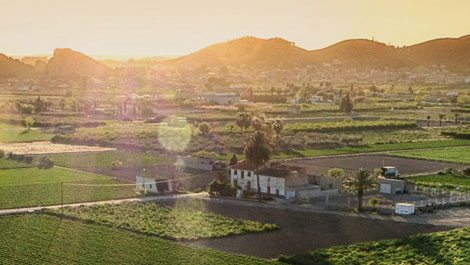Vía Verde de Mazarrón
Mazarrón' s Greenway starts (or ends) in the municipality of Fuente Álamo, in La Pinilla, in the rest area enabled at its confluence with the Greenway of Campo de Cartagena,
about 600 m Northwest of this small town.
It runs westwards through rainfed crops and, after crossing the RM-E17 road, it borders the Algarrobo foothills, a space covered by pine trees, esparto grass and bushes that can
be seen from the bridge over the los Tollos boulevard, in the municipality of Mazarrón.
A couple of kilometres ahead, we reach the rest area of El Saladillo, next to an inn located on the service road of the RM-3 Motorway, very close to the hermitage of San Antonio
in El Saladillo.
It continues southwards through the Country Club residential, along streets that have respected the railway route, and then crosses Las Yeseras boulevard, next to which another rest area has been conditioned, which can be accessed from the RM-E19 Road.
After crossing the RM-607 Highway and the AP-7 Highway along 13.7 km, it ends near Mazarrón, in a refuge area west of Cerro de San Cristóbal, a former colourful mining reserve that dates back to the Roman era.
Along the RM-D4 road, and separated from it by a protective barrier, a 1.3 km connection path has been built, which leads to the entrance of the city of Mazarrón, a few kilometres from the well-known beaches and coves of the municipality.
CONSORCIO DE LAS VÍAS VERDES DE LA REGIÓN DE MURCIA
Oficina en el Noroeste
Antigua Estación del Tren - Camino de la Estación s/n
30400 Caravaca de la Cruz (Murcia)
Teléfono: 868 185 185 - Fax: 868 185 186
http://www.viasverdesregiondemurcia.es
https://www.facebook.com/ViasVerdesRM
https://twitter.com/ViasVerdesRM
https://www.instagram.com/viasverdesrm/
https://www.youtube.com/channel/viasverdes
FOLLETO VÍA VERDE DE MAZARRÓN ![]()
VIA VERDE MAZARRÓN GREENWAY ITINERARY
- La Pinilla
- El Saladillo
- Country Club
- Mazarrón
La Pinilla
La Pinilla is a village of about 400 inhabitants that belongs to the municipality of Fuente Álamo. Its origin dates back to
the XVI century, although there are previous settlements from the Punic, Roman and Andalusian eras.
Located on the foothills of the Sierra del Algarrobo, it retains a certain rural flavour and some elements of interest,
such as the Church of Our Lady of Montserrat (XVII century) or the centenary olive tree (XV century).
El Saladillo
El Saladillo is one of the districts of Mazarrón. Its scarce and dispersed population was engaged in the cereal farming and in the manufacture of esparto, which dates back to Roman times.
Next to the Greenway is the hermitage of San Antonio and going west for about two kilometres, we get to the hot springs (50ºC) of el Saladillo, which emerged a few decades ago when a farmer drilled the ground in search for water for his almond trees.
Several residential areas have been built in this area, one of them crossing the Greenway (Country Club)
Mazarrón
The oldest remains of human settlements date from the Palaeolithic era. Since ancient times, Phoenicians, Romans, Muslims and Christians felt attracted by the region's mineral resources. In 1462 King Enrique IV granted mining exploitation to the Marquis of Villena and the Marquis of Vélez. A group of houses (XV century) known as "Casas de los Alumbres de Almazarrón", was named after the alum, abundant throughout the area. Once the exploitation of the alum mines declined, the "almagra", or Spanish red ochre, replaced it during the 17th and 18th centuries, and was bought by the Royal Treasury for the arsenals, as well as for the famous red tobacco from Seville.
More recently, the railroad served the mining industry, with the opening in 1886 of the route from Mazarrón to Puerto. In the middle of the XX century, the mining industry disappeared, and there was a new economic reactivation in the 70s, thanks to the intensive farming and tourism.
At present, it counts with more than 30,000 inhabitants, between Mazarrón, El Puerto and the districts, and is one of
the traditional sun and beach destinations of the Region of Murcia (over 35 km of coastline). In addition to its beaches, or its archaeological heritage, its monuments are worth mentioning, such as the Castle of Vélez, the churches of San Andrés and San Antonio de Padua, the Town Hall or the Casino.
In addition, we can find several watchtowers in the coastal area, the Archaeological Museum "Roman Salting
Factory" and the Phoenician Boat Interpretation Centre, as well as the "Erosions of Bolnuevo" (Natural Monument)
and the Protected Landscape of Sierra de Las Moreras.












